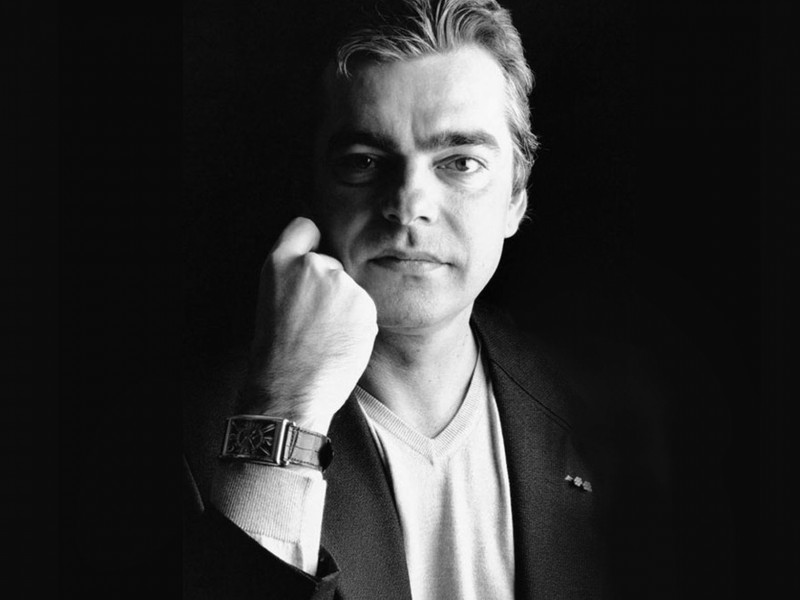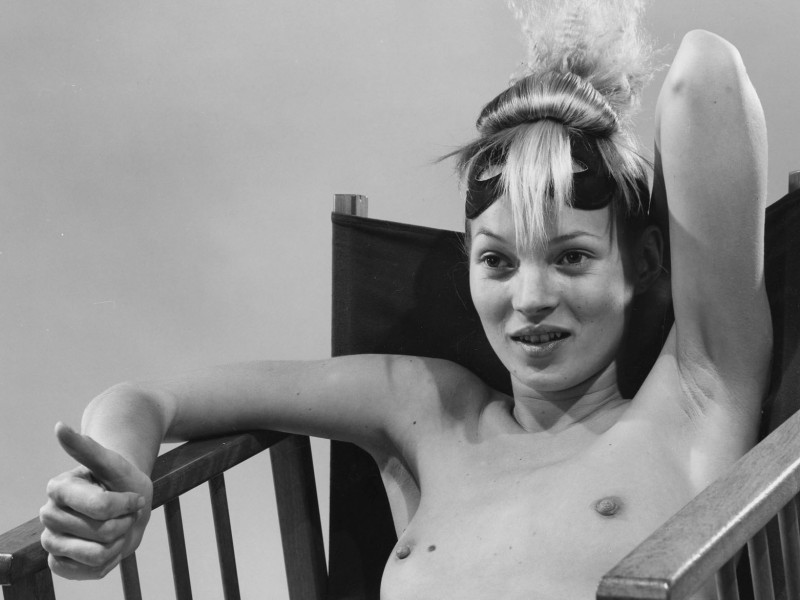Arguably the most successful art and fashion collaborations are those that display a certain degree of irreverence, or indeed, a willingness to up the traditional ante. This strategy of disruption was key to Marc Jacob’s art interventions at Louis Vuitton with the likes of Stephen Sprouse and Takashi Murakami. Jacobs recognised that collaboration afforded an opportunity to reframe the company’s illustrious history for a contemporary audience that failed to connect to Louis Vuitton’s longstanding heritage. Similarly, when Hermes invited Erwin Wurm to collaborate, the resulting One Minute Sculptures utilised the brand’s signature pieces in clever and subversive ways that ultimately reconceptualise its traditional brand icons.
Prestigious porcelain company Porzellan Manufaktur Nymphenburg looked to fashion to reprise the original avant garde status of their signature Commedia dell’Arte figurines. A popular form of comedic street theatre in Europe in the 17th and 18th century, Commedia dell’Arte is best known for characters such as Arlecchino (a mischievous servant) and Pantalone (a miserly merchant), characters that have endured time. The Couture Edition was a gesture of rebellion in keeping with the company’s original integral focus on commissioning leading artists of the day. Whilst contemporary culture might be defined by speed and fast consumerism, Nymphenburg is something of an anachronism; everything they make is handmade and predicated on time spent slowly.
Based in Munich, at the Nördliches Schlossrondell in Nymphenburg, the company was established by Bavarian Elector Max III Joseph and still bears the royal imprimatur. After 268 years in the business of making exquisitely beautiful things, Nymphenburg has proven its commitment to both innovation and tradition alike. Its history is deeply embedded in broader European heritage, and its porcelain is found in the most significant museums and galleries such as the Victoria and Albert Museum in London, the Stedelijk Museum in Amsterdam and the Museum of Modern Art in New York.
Though the company has a rich and celebrated history the true secret to its longevity is entwined with a willingness to look outside its own repertoire and collaborate with contrasting artistic disciplines in order to retain its reputation and avant-garde spirit. These projects have manifested into collaborations with artists and creatives such as Nick Knight, who designed a ‘sculptural photograph’ of arguably the most iconic face of the 20th century, model Kate Moss. Knight worked with Nymphenburg artisans—as well as sourcing input from aeronautical engineers—to mould and craft the model’s features to realise the crucifix inspired work. Importantly the piece makes a contemporary analogy with Nymphenburg’s celebrated religious and devotional pieces. The figurine represents a bridge with tradition and pop culture, and the sacred and profane.
Originally created in 1759-1760 by Franz Anton Bustelli, the Commedia dell’Arte figurines are amongst Nymphenburg’s most famous designs. At their inception they were groundbreaking and utterly contemporary, describing the rococo zeitgeist. To celebrate the company’s 260th anniversary in 2008, 16 fashion designers were invited to reimagine the costume of their favourite Commedia dell’Arte character—of which there are 16 in the series.
Designers, each of whom were chosen for their own perceived avant garde status in respect to their milieu, were given carte blanche in the form of a white figurine to be customised to their specifications. Although the porcelain figurines appear deceptively simple, each Commedia dell’Arte character is composed of some 100 individually cast and hand assembled pieces. The designers who were entrusted to redress the figurines included Adeline André, Damiano Biella (Escada), Igor Chapurin, Esteban Cortázar (Emanuel Ungaro), Maurizio Galante, Christian Lacroix, Gustavo Lins, Pascal Millet (Carven), Ralph Rucci, Elie Saab, Dominique Sirop, Franck Sorbier, Naoki Takizawa, Viktor&Rolf, Vivienne Westwood and Gareth Pugh. The company’s willingness to turn over one of its most beloved product lines to some of the 20th century’s most significant creative individuals amounts to a calculated risk, but one with mutual benefit, a tension between tradition and reinvention.
The connection with fashion is an appropriate one, as there has been a notable return to the artisanal in contemporary couture collections with an emphasis on authenticity and bespoke design. In a concerted attempt to retain the crafts and skills unique to couture, Karl Lagerfeld has led the charge at Chanel, acquiring the main ateliers that create lace, bead work and trimmings, the subject of the Arts des Metiers collections. Nymphenburg is too part of the great European artisanal tradition. All of its pieces are produced as they have always been to exacting designs and by a small number of dedicated craftspeople.
It is thus not anomalous for the company to look to the great couturiers for collaborations. Haute couture is where fashion, craft and art most closely coalesce. It is by definition the appreciation and focus of the handmade; it is the most considered form of fashion. Lacroix’s work is emblematic of the hedonistic 1980s and its celebration of embellishment and ornamentation. Valentino brought to his figurine his signature red, while Viktor&Rolf, who have sourced inspiration from the harlequin and Commedia dell’Arte in previous collections, adopted a darker more conceptual framework in keeping with their own intellectually challenging aesthetic.
Related Features
-
91
-
-
-

